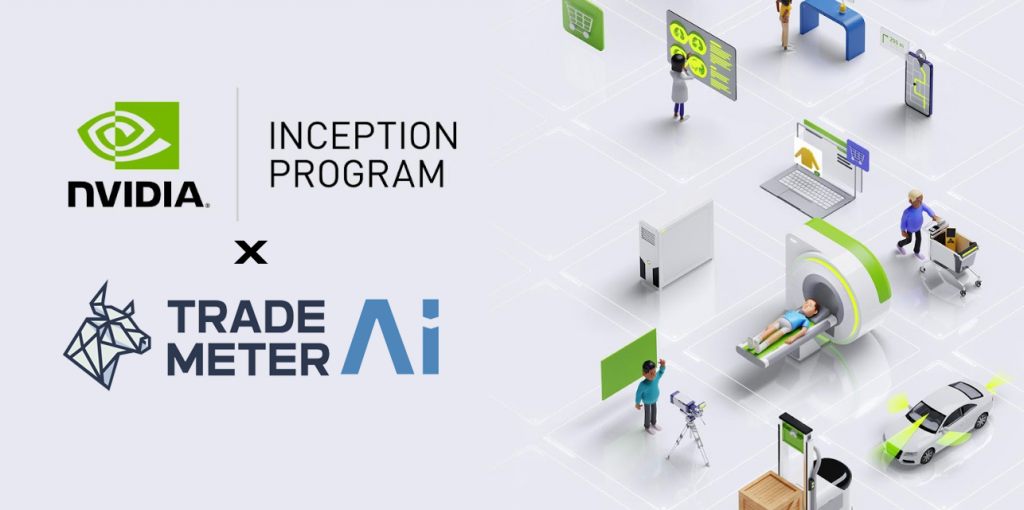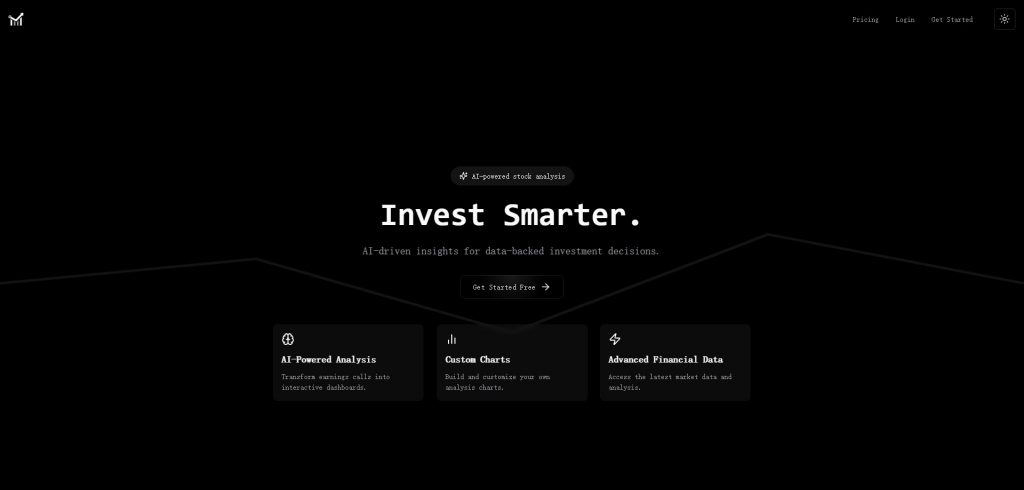20 Great Ideas For Deciding On copyright Predictions
Wiki Article
Top 10 Tips To Optimize Computational Resources For Ai Stock Trading From Penny To copyright
It is essential to optimize the computational power of your computer for AI stock trading. This is particularly true when dealing with copyright or penny stocks that are volatile markets. Here are the top 10 strategies to maximize your computational power.
1. Cloud Computing can help with Scalability
Tip Tips: You can increase the size of your computing resources making use of cloud-based services. They are Amazon Web Services, Microsoft Azure and Google Cloud.
Cloud-based services enable you to scale down and up in accordance with the volume of trading as well as model complexity, data processing needs and more., particularly when dealing on volatile markets, such as copyright.
2. Make sure you choose high-performance hardware that can handle real-time processing
Tip: Invest in high-performance hardware, for instance, Graphics Processing Units (GPUs) and Tensor Processing Units (TPUs), that are perfect for running AI models efficiently.
The reason: GPUs and TPUs significantly speed up the process of training models and real-time processing which are vital for quick decision-making on stocks with high speeds such as penny shares and copyright.
3. Improve data storage and access speeds
Tip Use high-speed storage services such as cloud-based storage or solid-state drive (SSD) storage.
The reason: AI driven decision-making requires access to historical data in addition to real-time market data.
4. Use Parallel Processing for AI Models
Tip: Use techniques of parallel processing to execute several tasks simultaneously. For instance you can study different segments of the market at once.
The reason is that parallel processing speeds up analysis of data and the creation of models particularly for large data sets from different sources.
5. Prioritize Edge Computing for Low-Latency Trading
Tip: Use edge computing techniques that make computations are processed closer to the source of data (e.g. Data centers or exchanges).
Edge computing reduces latency which is essential for markets with high frequency (HFT) as well as copyright markets. Milliseconds are crucial.
6. Improve the efficiency of the algorithm
A tip: Optimize AI algorithms for better effectiveness during training as well as execution. Techniques like pruning (removing unimportant model parameters) can help.
What's the reason: Optimized models consume less computational resources and maintain speed, which reduces the need for excessive hardware and speeding up trading execution.
7. Use Asynchronous Data Processing
Tips: Asynchronous processing is the best way to ensure that you can get real-time analysis of trading and data.
Why? This method is ideal for markets with high volatility, like copyright.
8. Manage the allocation of resources dynamically
Utilize tools that automatically manage the allocation of resources according to the load (e.g. market hours and major occasions).
Why: Dynamic resource distribution ensures AI models run smoothly and without overloading systems. This reduces downtime during times with high volume trading.
9. Make use of light models to simulate real time trading
Tip: Choose lightweight machine-learning models that are able to quickly make decisions based on the latest data without needing large computational resources.
Reason: Trading in real-time particularly with penny stocks and copyright, requires quick decision-making rather than complicated models as the market's environment can be volatile.
10. Monitor and Optimize Computational Costs
Track the AI model's computational costs and optimize them to maximize cost effectiveness. Pricing plans for cloud computing like spot instances and reserved instances are based on the needs of your company.
How do you know? Effective resource management ensures you are not spending too much on computing resources. This is particularly important when you're trading on low margins, for example penny stocks and volatile copyright markets.
Bonus: Use Model Compression Techniques
Tips: Use model compression techniques like distillation, quantization, or knowledge transfer to decrease the complexity and size of your AI models.
The reason: Models that are compressed keep their performance and are more efficient with their resources, making them the ideal choice for real-time trading, especially when computational power is limited.
Implementing these tips will help you optimize computational resources for creating AI-driven platforms. This will ensure that your strategies for trading are cost-effective and efficient regardless of whether you trade penny stocks or copyright. Take a look at the recommended trade ai for site recommendations including penny ai stocks, ai stock trading bot free, artificial intelligence stocks, ai for trading, ai financial advisor, trading ai, ai stock market, ai stock picker, ai stock, ai for stock trading and more.

Top 10 Tips To Pay Attention To Risk Measures For Ai Prediction Of Stock Pickers And Investments
Pay attention to risk-related metrics. This can ensure that your AI-powered strategy for investing, stock picker and forecasts are balanced and resilient to changes in the market. Understanding and minimizing risk is crucial to shield your portfolio from massive losses. This also helps you make informed data-driven decisions. Here are 10 best strategies for integrating AI investment strategies and stock-picking using risk-related metrics:
1. Know the most important risk metrics: Sharpe ratio, maximum drawdown, and volatility
TIP: To gauge the efficiency of an AI model, pay attention to the most important indicators like Sharpe ratios, maximum drawdowns, and volatility.
Why:
Sharpe ratio measures the investment return relative to the level of risk. A higher Sharpe ratio indicates better risk-adjusted performance.
You can calculate the maximum drawdown to determine the highest peak-to -trough loss. This will allow you to better understand the possibility of huge losses.
Volatility quantifies market volatility and price fluctuations. A lower volatility level indicates stability, while higher volatility suggests more risk.
2. Implement Risk-Adjusted Return Metrics
Tips - Make use of return measures that are risk adjusted such as Sortino ratios (which concentrate on downside risks) and Calmars ratios (which compare returns with the maximum drawdowns) to evaluate the true performance your AI stock picker.
The reason: These metrics assess how well your AI models perform compared to the amount of risk they take on. They let you assess whether the ROI of your investment is worth the risk.
3. Monitor Portfolio Diversification to Reduce Concentration Risk
Tips: Make use of AI to optimize and manage your portfolio's diversification.
Why: Diversification can reduce concentration risk. Concentration happens when a portfolio becomes overly dependent on a single stock market, sector or even sector. AI helps to identify the connections between assets and make adjustments to allocations to mitigate the risk.
4. Track Beta to Assess Market Sensitivity
Tip: Use the beta coefficient to gauge the sensitivity of your portfolio to market fluctuations of your stock or portfolio.
What is the reason? A portfolio that has a Beta greater than 1 is volatile, whereas a beta less than 1 suggests lower risk. Understanding beta helps in tailoring the risk-adjusted exposure to market movements and investor risk tolerance.
5. Implement Stop-Loss, Take-Profit and Limits of Risk Tolerance
Make use of AI models and forecasts to determine stop-loss levels as well as levels of take-profit. This will assist you manage your losses and lock-in the profits.
Why: Stop-loss levels protect your from excessive losses, while a the take-profit level secures gains. AI helps identify the optimal levels based on past price action and volatility, while maintaining a balance between risk and reward.
6. Use Monte Carlo Simulations to simulate Risk Scenarios
Tip: Monte Carlo models can be run to determine the potential outcomes of portfolios based on different market and risk conditions.
Why is that? Monte Carlo simulations are a way to get an accurate picture of the future performance of your portfolio. It allows you to better plan for risk scenarios such as massive losses and extreme volatility.
7. Examine correlations to determine systemic and unsystematic risks
Tip: Use AI for correlation analysis between your portfolio and larger market indexes to determine both systemic and unsystematic risk.
What is the reason? Unsystematic risk is specific to an asset, whereas systemic risk affects the whole market (e.g. recessions in the economy). AI can assist in identifying and limit unsystematic risk by recommending less correlated assets.
8. Be aware of the Value at Risk (VaR), in order to estimate the risk of loss
Utilize the Value at risk models (VaRs) to calculate the potential loss in an investment portfolio with a proven confidence level.
Why? VaR provides a clear view of what could happen with regards to losses, which allows you to evaluate the risks in your portfolio under normal market conditions. AI can be utilized to calculate VaR in a dynamic manner while responding to market changes.
9. Set a dynamic risk limit that is based on current market conditions
Tips: Make use of AI to dynamically adjust the risk limit based on current market volatility, the economic conditions, and stock-to-stock correlations.
Why: Dynamic risks limits the exposure of your portfolio to risky situations when there is high volatility or uncertainty. AI can analyse the data in real time and adjust your portfolio to ensure an acceptable risk tolerance. acceptable.
10. Machine learning can be used to predict tail events and risk variables.
Tips - Use machine-learning algorithms to predict extreme events and tail risks Based on the past data.
The reason: AI can assist in identifying risks that traditional models may not be able detect. They can also predict and prepare you for unpredictable but extreme market conditions. The analysis of tail-risk helps investors recognize the risk of devastating losses and prepare for them in advance.
Bonus: Regularly Reevaluate Risk Metrics in the face of changing market Conditions
Tips. Update and review your risk assessment as the market conditions change. This will enable you to stay on top of the changing geopolitical and economic developments.
The reason is that market conditions change frequently, and using outdated risk models could result in incorrect risk assessment. Regular updates will ensure that your AI models are able to adapt to changing risks and accurately reflect the current market conditions.
The conclusion of the article is:
By monitoring risk metrics closely and incorporating these into your AI stockpicker, investment strategies and forecasting models to create a more resilient portfolio. AI tools are powerful for managing risk and making assessments of it. They allow investors to make informed, data-driven choices that balance risk-adjusted potential gains. These guidelines will aid you in creating a robust strategy for managing risk, which will ultimately improve the stability and efficiency of your investment. Check out the best ai stocks to invest in for more recommendations including ai stock picker, ai stock trading app, ai stock picker, ai copyright trading bot, ai trader, best ai stock trading bot free, ai copyright trading, ai stock, trading bots for stocks, trading ai and more.
